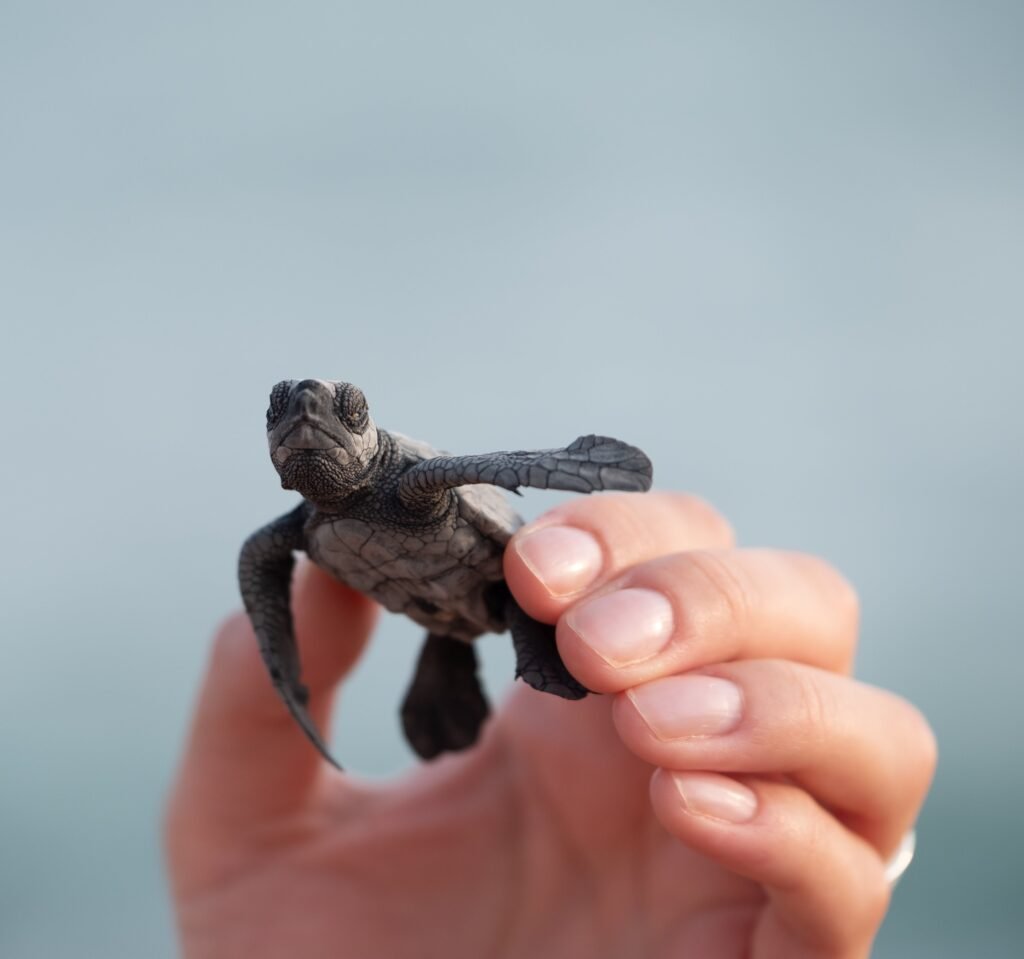So you’ve welcomed some furry eight-legged friends into your home and now you want to take their little spider family to the next level? Creating a suitable breeding environment for your tarantulas might seem like a daunting task, but fear not! With a few simple steps, you’ll be well on your way to ensuring a cozy and comfortable space for your arachnid companions to procreate. From maintaining the right temperature and humidity levels to providing ample hiding spots, this article will guide you through the ins and outs of setting up the perfect love nest for your tarantulas. Let’s get web-slingin’!
Setting up the Enclosure
Choosing the Right Size
When it comes to setting up an enclosure for your tarantulas, choosing the right size is crucial. Tarantulas require enough space to move around comfortably and exhibit natural behaviors. As a general rule of thumb, the enclosure should be at least three times the leg span of your tarantula in width and twice the leg span in height. This will provide sufficient room for your tarantula to explore and create a suitable environment.
Selecting the Proper Enclosure Type
There are various types of enclosures available for tarantulas, including glass tanks, plastic containers, and acrylic cages. Each type has its own advantages and disadvantages. Glass tanks offer excellent visibility and are easy to clean, while plastic containers are lightweight and provide good ventilation. Acrylic cages are a popular choice due to their durability and ability to maintain humidity levels. Consider the specific needs of your tarantula species and choose an enclosure type that meets those requirements.
Creating Adequate Ventilation
Proper ventilation is essential for maintaining a healthy environment for your tarantulas. Insufficient airflow can result in stagnant air and high humidity levels, leading to health issues such as respiratory problems or mold growth. To ensure adequate ventilation, choose an enclosure with ventilation holes or mesh on the sides. However, be cautious not to have too much ventilation, as it can cause excessive moisture loss and harm your tarantula. Finding the right balance is key.
Providing Suitable Substrate
Selecting the right substrate is important for creating a comfortable and natural habitat for your tarantula. The substrate should mimic the tarantula’s natural environment and provide a suitable surface for burrowing or web-building. Common substrates for tarantulas include coconut fiber, vermiculite, and a mix of soil and sand. Avoid using substrates with excessive moisture retention or ones that can cause impaction. Research the specific needs of your tarantula species to ensure you provide the appropriate substrate.
Including Hiding Places
Tarantulas are nocturnal creatures and require hiding places to feel secure. These hiding spots also serve as retreats during molting, breeding, and periods of stress. You can provide hiding places by including various items in the enclosure, such as cork bark, hollow logs, or purpose-built hides. Make sure the hiding places are secure and allow easy access for your tarantulas. Having multiple hiding spots throughout the enclosure will give your tarantula options and help reduce stress.
Maintaining Temperature and Humidity
Understanding Optimal Temperature Range
Maintaining the correct temperature range is crucial for the overall health and well-being of your tarantulas. Different species have specific temperature requirements, so it’s important to research and understand the optimal temperature range for your particular tarantula species. Most tarantulas thrive in temperatures ranging from 75°F to 85°F (24°C to 29°C). Some species may require slightly higher or lower temperatures, so keep this in mind when setting up heating arrangements.
Monitoring and Adjusting Temperature
To maintain the desired temperature range, it’s essential to monitor and adjust the temperature inside the enclosure. Use a reliable thermometer to measure the temperature accurately. Heating pads, ceramic heat emitters, or heat lamps can be used to provide supplemental heat if needed. Experiment with different heating options to achieve the desired temperature range and regularly monitor the temperature to make any necessary adjustments.
Balancing Humidity Levels
Proper humidity levels are crucial for tarantulas, as they rely on moisture for molt success and overall health. However, excessive humidity can also lead to problems such as fungal growth and respiratory issues. The ideal humidity range for most tarantulas is around 60% to 70%. To maintain optimal humidity levels, misting the enclosure with water or using a reptile fogger can help increase humidity. On the other hand, providing good ventilation and avoiding waterlogging will prevent excessive humidity.
Using Humidity Tools
To ensure accurate humidity levels, it’s helpful to use humidity tools such as a hygrometer. A hygrometer measures the humidity inside the enclosure and helps you maintain the ideal range for your tarantulas. Place the hygrometer at a level where it can provide an accurate reading. Regularly monitor the humidity levels and make adjustments as necessary to keep your tarantula’s environment stable and healthy.
Preventing Excessive Moisture
While tarantulas require humidity, it’s important to prevent excessive moisture that can lead to problems like mold or bacterial growth. Avoid overwatering the substrate and ensure proper drainage to prevent water pooling at the bottom of the enclosure. If you notice excessive moisture, consider increasing ventilation or adjusting the misting frequency. Regularly check for signs of mold or excess moisture to maintain a clean and safe environment for your tarantulas.

Lighting and Photoperiod
Choosing Appropriate Light Sources
Tarantulas do not require specific lighting like reptiles or plants. They are primarily nocturnal creatures and are more active in low light conditions. However, providing a light source can help regulate the day and night cycle and promote natural behaviors. A simple soft, low-wattage incandescent or LED bulb can be used to simulate natural lighting within the enclosure. Avoid using bright or intense lighting, as it can cause stress or disrupt the tarantula’s natural rhythm.
Recreating Natural Day and Night Cycles
Tarantulas rely on a natural day and night cycle to regulate their biological processes. To recreate this cycle, it’s important to establish a consistent lighting schedule. On a daily basis, provide your tarantulas with an average of 10 to 12 hours of darkness and 12 to 14 hours of low-level lighting. Mimicking the natural light changes will help maintain the tarantula’s natural behavior and promote a healthy circadian rhythm.
Balancing Light Exposure
While providing some light within the enclosure is beneficial, excessive light exposure can be detrimental to tarantulas. Overexposure to bright or intense lights can cause stress, disrupt the tarantula’s natural behavior, and even affect their molting process. As a general rule, avoid exposing your tarantulas to direct sunlight or any intense lighting for prolonged periods. Ensure the light provided is dim and diffuse, similar to natural light in their natural habitat.
Avoiding Excessive Light
In addition to avoiding bright lights, it’s important to prevent any external light sources from disturbing your tarantula’s enclosure. Keep the enclosure away from windows or areas where bright sunlight can directly enter. Also, be mindful of the light sources in the room, such as lamps or TVs, that may generate excessive light during the night. Creating a dark and quiet environment for your tarantulas will help reduce stress and promote natural behavior.
Feeding Tarantulas
Understanding Tarantula Diet
Tarantulas are carnivorous creatures and feed primarily on live prey. Their diet mainly consists of insects, such as crickets, roaches, and mealworms. Some larger tarantula species may also consume small vertebrates like mice or lizards. However, it’s important to research the specific dietary needs of your tarantula species, as some may have different preferences or requirements. Understanding the natural diet of your tarantulas will help ensure they receive the appropriate nutrition.
Selecting Suitable Prey
When selecting prey for your tarantulas, it’s important to choose appropriate sizes and species. Prey items should be smaller than or around the same size as the tarantula’s body, so they can be successfully captured and consumed. Live prey, such as crickets or roaches, are the most common options. However, you can also offer pre-killed prey if your tarantula doesn’t respond well to live prey. Always avoid using prey items that may harm or injure your tarantula, such as venomous insects.
Feeding Frequency and Portion Size
The frequency and portion size of feeding depend on the age, size, and species of your tarantulas. As a general guideline, adult tarantulas can be fed every 1 to 2 weeks, while spiderlings may require more frequent feeding. Offer a prey item that’s approximately the size of your tarantula’s abdomen. If the prey is not consumed within 24 hours, remove it to prevent stress or potential harm to your tarantula. Regularly monitor your tarantula’s feeding habits to adjust the frequency and portion size accordingly.
Monitoring Feeding Habits
Observing your tarantula’s feeding habits is important for assessing their health and appetite. Healthy tarantulas will actively hunt and capture prey, while those that have recently molted may take a few days to regain their appetite. Monitor the feeding response of your tarantulas and take note of any changes in appetite or feeding behavior. A sudden loss of appetite or refusal to eat may indicate a health issue, and it’s recommended to consult a veterinarian or tarantula expert for advice.
Managing Food Availability
After offering the prey item, it’s important to remove any uneaten food to maintain a clean and hygienic enclosure. Rotting prey can attract pests or lead to mold growth, which can be harmful to your tarantula. Use feeding tongs or forceps to remove uneaten prey items and make sure to thoroughly clean the feeding tools afterward. Properly managing food availability will help ensure the overall health and well-being of your tarantulas.

Tarantula Hydration
Providing a Water Dish
Tarantulas require access to fresh water for hydration. A shallow water dish can be provided within the enclosure to fulfill this need. Choose a dish that is small and shallow, ensuring your tarantula can easily access the water without the risk of drowning. Clean and refill the water dish regularly to maintain cleanliness and prevent any contaminants from affecting your tarantula’s health.
Managing Water Availability
While it’s important to provide access to water, it’s equally important to manage water availability to prevent excessive moisture within the enclosure. Avoid waterlogging the substrate or creating an environment that is constantly damp, as this can lead to mold growth or respiratory issues. Monitor the water dish regularly to ensure it hasn’t evaporated completely, and refill it when necessary. Aim to strike a balance between providing water for hydration and maintaining a suitable enclosure environment.
Misting or Spraying the Enclosure
In addition to a water dish, misting or spraying the enclosure can provide additional moisture for your tarantulas. This is particularly important for species that require higher humidity levels. Use a clean spray bottle filled with chlorine-free water to mist the enclosure lightly. Avoid spraying directly onto the tarantula or creating excessive moisture. A light misting once or twice a week, depending on the tarantula’s needs, will help provide the necessary moisture without overwhelming the enclosure.
Avoiding Waterlogging
Though tarantulas require some level of humidity, it’s crucial to avoid waterlogging the substrate or creating an environment that’s constantly damp. Waterlogging can lead to stagnant water, mold growth, or bacterial infections, which can be harmful to your tarantula’s health. Ensure proper drainage within the enclosure and adjust misting frequencies accordingly if you notice excessive moisture or dampness. Maintaining a balance between humidity and avoiding waterlogging is vital for the well-being of your tarantulas.
Maintaining Cleanliness
Spot Cleaning
Regular spot cleaning is essential for maintaining a clean and hygienic enclosure for your tarantulas. Remove any debris, uneaten prey, or molting exoskeletons promptly to prevent pests or odor buildup. Use feeding tongs or forceps to remove the waste and clean the tools thoroughly afterward. Spot cleaning should be done on a regular basis, typically during feeding or observation times, to ensure your tarantula’s enclosure remains clean and safe.
Regular Substrate Replacement
Substrate replacement is an important task to prevent the buildup of waste products and maintain a clean environment for your tarantulas. Completely replace the substrate every few months, or as needed, depending on the size of your tarantula and the enclosure conditions. During substrate replacement, thoroughly clean the enclosure and any decor items to prevent the accumulation of contaminants. Providing fresh, clean substrate will help promote a healthy environment for your tarantulas.
Sterilizing Enclosure
Regularly sterilizing the enclosure is a crucial step in maintaining cleanliness and preventing the growth of mold or harmful bacteria. After removing the tarantula, decor items, and old substrate, clean the enclosure with a reptile-safe disinfectant or a mixture of water and vinegar. Make sure to rinse thoroughly to remove any residue and allow the enclosure to dry completely before adding new substrate and returning your tarantula. Regular sterilization will minimize the risk of infections and maintain a healthy living space for your tarantulas.
Preventing Mold and Bacterial Growth
Mold and bacterial growth can pose serious health risks to your tarantulas. To prevent these issues, ensure that the enclosure is properly ventilated and the substrate is neither too wet nor dry. Providing adequate airflow will help prevent stagnant moisture that can contribute to mold or bacterial growth. Regularly monitor the enclosure for any signs of mold, such as fuzzy or discolored patches, and address them promptly. Maintaining cleanliness and proper ventilation will significantly reduce the likelihood of mold or bacterial issues.
Cleaning Water Dish
The water dish within the enclosure should be cleaned regularly to prevent the buildup of contaminants or algae. Empty the water dish and rinse it with warm water, using a brush to scrub away any residue. Avoid using harsh chemicals or detergents, as they can be harmful to your tarantula. Refill the water dish with fresh, chlorine-free water and place it back in the enclosure. Cleaning the water dish regularly will ensure your tarantula has access to clean water and prevent any health issues related to contaminated water.

Minimizing Stress Factors
Avoiding Loud Noises
Tarantulas have a highly sensitive vibration detection system. Loud or sudden noises can cause stress and anxiety in your tarantulas. Keep the enclosure in a quiet area of your home, away from sources of loud noise such as TVs, speakers, or high-traffic areas. Creating a calm and peaceful environment for your tarantulas will help minimize stress and promote their overall well-being.
Preventing Vibrations
Tarantulas are extremely sensitive to vibrations, which can mimic the movements of a potential predator or disrupt their natural behavior. Avoid placing the enclosure on or near vibrating surfaces, such as loud appliances, washing machines, speakers, or subwoofers. These vibrations can cause stress and potentially harm your tarantulas. Maintaining a vibration-free environment will ensure your tarantulas feel safe and comfortable in their enclosure.
Minimizing External Disturbances
To minimize stress, it’s important to minimize external disturbances that may startle or stress your tarantulas. Avoid sudden movements or disturbances near the enclosure, and be mindful of activities that may cause vibrations or loud noises. Keep the enclosure away from high-traffic areas, where there may be constant movement or disturbances. By creating a calm and quiet environment, you will help your tarantulas feel secure and minimize their stress levels.
Preventing Intruders
Intruders, such as pests or parasites, can cause extreme stress and be harmful to your tarantulas. Regularly inspect the enclosure and its surroundings for any signs of pests, such as mites or flies. Prevention is key to avoiding infestations, so ensure the enclosure is properly sealed, and any mesh or ventilation holes are securely fastened. Avoid introducing wild-caught insects into the enclosure, as they may carry parasites or diseases. By preventing intruders, you will help maintain a stress-free environment for your tarantulas.
Monitoring Environmental Stability
Tarantulas thrive in stable environments with consistent temperature, humidity, and lighting conditions. Fluctuations in these parameters can cause stress and disrupt their natural behavior. Regularly monitor the enclosure’s temperature, humidity, and lighting levels to ensure they remain within the desired range. Make any necessary adjustments promptly to maintain a stable and comfortable environment for your tarantulas. A stress-free environment will promote healthy growth and overall well-being in your tarantulas.
Breeding Pair Selection
Researching Suitable Species
Before attempting to breed tarantulas, it’s crucial to thoroughly research the species you intend to breed. Not all tarantula species are suitable for breeding in captivity, and some may have specific requirements or considerations. Research the natural habitat, behaviors, and breeding habits of your chosen tarantula species to ensure you have the necessary knowledge and resources to provide a suitable breeding environment.
Choosing Healthy and Mature Tarantulas
Selecting healthy and mature tarantulas is vital for successful breeding. Both the male and female tarantula should be in good overall health and display no signs of illness or disease. Ensure your tarantulas have been properly cared for and have received appropriate nutrition prior to breeding. Additionally, make sure both the male and female tarantulas have reached sexual maturity, as immature individuals will not be able to successfully mate.
Checking Compatibility
Compatibility is an important consideration when selecting a breeding pair of tarantulas. Different tarantula species may have different needs, behaviors, or reproductive capabilities. Ensure that the male and female tarantulas are of the same species and compatible in terms of size and behavior. In some cases, introducing incompatible tarantulas can result in aggression or injury. Consult reputable resources or tarantula breeding experts for guidance on choosing compatible breeding pairs.
Separating Mating Partners
After successfully mating, it’s important to separate the male and female tarantulas to prevent potential aggression or cannibalism. Male tarantulas have a shorter lifespan than females and may be at risk if left with the female after mating. Female tarantulas may also exhibit aggressive behavior towards the male, especially during or after egg-laying. Ensure you have separate enclosures prepared for both the male and female tarantulas to ensure their safety and well-being.
Monitoring Courtship Behavior
During the breeding process, it’s crucial to closely monitor the courtship behaviors of the mating pair. Courtship behaviors can vary between tarantula species, but typically involve specific movements, postures, or drumming on the substrate. Observe the courtship rituals while being mindful not to interfere or disturb the tarantulas. Documenting and understanding the courtship behaviors will help you determine the success of the mating process and anticipate potential breeding outcomes.

Providing Breeding Conditions
Creating a Suitable Microclimate
Creating a suitable microclimate within the breeding enclosure is essential to encourage successful breeding. Research the specific temperature and humidity requirements for your tarantula species during the breeding period. Adjust the temperature and humidity levels accordingly within the enclosure to mimic the tarantulas’ natural habitat or breeding season. Providing a suitable microclimate will optimize the chances of successful breeding and egg-laying.
Offering Strategic Heat Sources
Offering strategic heat sources is crucial to maintaining the optimal temperature range for breeding tarantulas. Use heating pads, heat lamps, or ceramic heat emitters to provide supplemental heat within the breeding enclosure. Place the heat source in a strategic location so that tarantulas can choose the desired temperature gradient. By offering well-regulated heat sources, you will create a comfortable environment that promotes the necessary breeding behaviors.
Balancing Humidity for Mating
Humidity plays an important role in the breeding process of tarantulas. Research the specific humidity requirements for your tarantula species during mating and egg-laying. Increase the humidity levels within the enclosure by misting, using reptile foggers, or other humidity-modifying tools. Monitor the humidity closely and adjust it to meet the breeding requirements of your tarantulas. Balancing humidity will stimulate proper mating behaviors and create an ideal environment for successful breeding.
Providing Secure Mating Ground
Tarantulas require a secure mating ground where they can engage in the breeding process undisturbed. Provide adequate space within the enclosure for the male and female tarantulas to perform their courtship rituals. Add suitable decor items, such as branches or hides, to create secure spaces for the tarantulas to retreat or construct egg sacs. Ensuring a secure mating ground will minimize stress and any potential disturbances during the breeding process.
Maintaining Proper Photoperiod
Maintaining a consistent photoperiod is crucial during the breeding period. Tarantulas rely on natural light cues to regulate their breeding behaviors. Avoid sudden changes in lighting or exposure to excessive light during the dark cycle. Maintain a stable light schedule, ensuring the tarantulas receive the proper period of darkness and light exposure. Consistent photoperiod will help stimulate breeding behaviors and create an optimal environment for tarantula breeding.
Nurturing Eggs and Offspring
Collecting and Incubating Eggs
After successful mating, female tarantulas will lay eggs. Carefully collect the eggs and transfer them to a separate incubation container to nurture the embryos. The incubation container should provide a controlled environment, with suitable substrate and moisture levels. Research the specific incubation requirements for your tarantula species, as different species may have different needs. Monitor the eggs regularly for signs of development or potential issues.
Maintaining Optimal Incubation Conditions
Maintaining optimal incubation conditions is critical for the development and hatching of tarantula eggs. Research the temperature and humidity requirements for incubating tarantula eggs. Ensure the incubation container is kept at a suitable temperature and humidity level, which may require the use of heat mats, warm water baths, or misting. Regularly monitor the incubation conditions and make necessary adjustments to meet the specific needs of your tarantula species.
Observing Maternal Care Behavior
Some tarantula species exhibit maternal care behavior, where the female stays near the eggs or spiderlings and provides protection. If your tarantula species displays maternal care, it’s important to observe and respect this behavior. Limit disturbances to avoid stressing the female or disrupting her care for the eggs or spiderlings. Providing a secure and stable environment will support the natural maternal instincts of your tarantulas.
Feeding Spiderlings Appropriately
As the spiderlings hatch, it’s important to ensure they have access to suitable food sources. Tiny prey items, such as fruit flies or pinhead crickets, are appropriate for feeding spiderlings. Research the specific dietary needs of your tarantula species at this stage and provide appropriate prey items accordingly. Offer small quantities of prey regularly, ensuring the spiderlings have enough food without overwhelming them.
Providing Sufficient Food and Hiding Places
As the spiderlings grow, it’s important to provide sufficient food and hiding places within their enclosure. Gradually increase the prey size as the spiderlings grow, offering appropriate-sized prey items to meet their nutritional needs. Additionally, include multiple hiding places or suitable decor items to create a secure and stimulating environment. Adequate food and hiding places will support the growth and development of your tarantula spiderlings.
Creating a suitable breeding environment for your tarantulas is crucial for their overall health, well-being, and reproductive success. By following the guidelines outlined above and researching the specific requirements of your tarantula species, you can provide a comfortable, secure, and optimal environment for breeding, nurturing, and raising healthy tarantulas. Remember to regularly monitor and adjust the conditions as needed, and seek advice from reputable resources or tarantula breeding experts if you require further guidance. With proper care and attention, you can create a successful and fulfilling breeding experience for your tarantulas.

